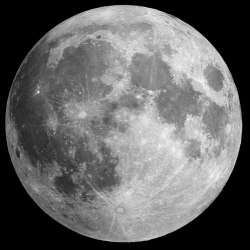
China has commissioned a group of scientists to study the feasibility of building a manned radar station on the moon, but many experts on the mainland have questioned the potentially massive cost of the project and the usefulness of building such a base.
The government project was launched earlier this year and received kick-start funding of 16 million yuan (HK$18.7 million) from the National Natural Science Foundation of China, according to its website.
The proposed facility, which may include quarters for astronauts and a powerful radar antenna array at least 50 metres high, could monitor wider areas of our planet than existing satellites, according to scientists involved in the study.
The base, which would be used for scientific research and defence monitoring, could also produce more powerful and clearer images of earth as the high-frequency microwaves emitted by the radar station could not only penetrate cloud, but also the earth’s surface, allowing it to monitor areas on land, under the sea and underground.
Leading space scientists in China have joined the radar station project. The team held a two-day brainstorming session at the Fragrant Hill Hotel in Beijing last month.
Those taking part included Yan Jun, the director of the National Astronomical Observatories; Professor Lin Yangting, a planetary researcher whose team discovered evidence of coal-like carbon in an asteroid; and senior scientists from China’s unmanned lunar exploration missions.
The team leader is Professor Guo Huadong, a top radar technology expert at the Chinese Academy of Sciences.
Guo initially proposed the moon-based radar station in a research paper in the journal Science China Earth Sciences three years ago.
He suggested the moon had numerous advantages over satellites or a space station as an earth observation platform, including stability and the unlimited durability of any complex on the lunar surface.
The data collected by lunar radar would help with a wide range of scientific research issues such as monitoring extreme weather conditions, global earthquake activity, agricultural production and the collapse of the polar ice caps, he wrote.
To generate high intensity radio beams that could reach earth, the radar station would need an enormous amount of power so a solar or nuclear power plant would have to be built, Guo said in the paper.
The radar would generate at least 1.4 gigabytes of data each second, a volume far exceeding the bandwidth of current long-distance space communications technology, but this would not be a problem if the station was manned by astronauts who could process the information on site, he added.
